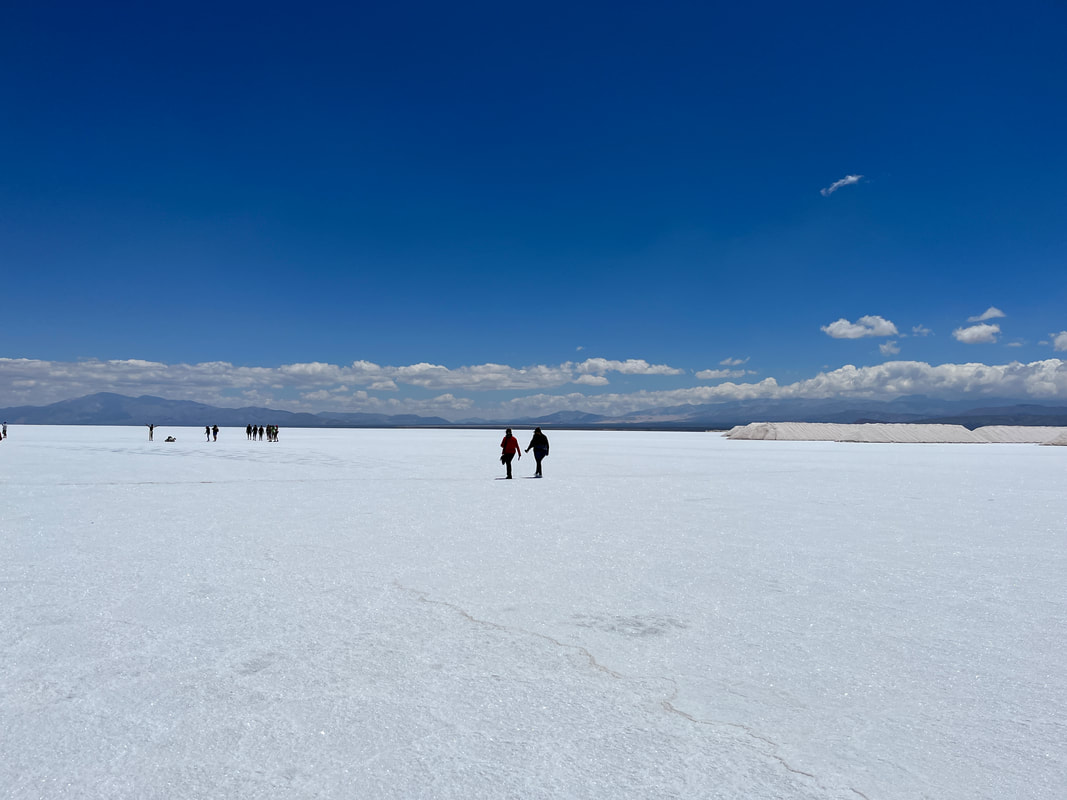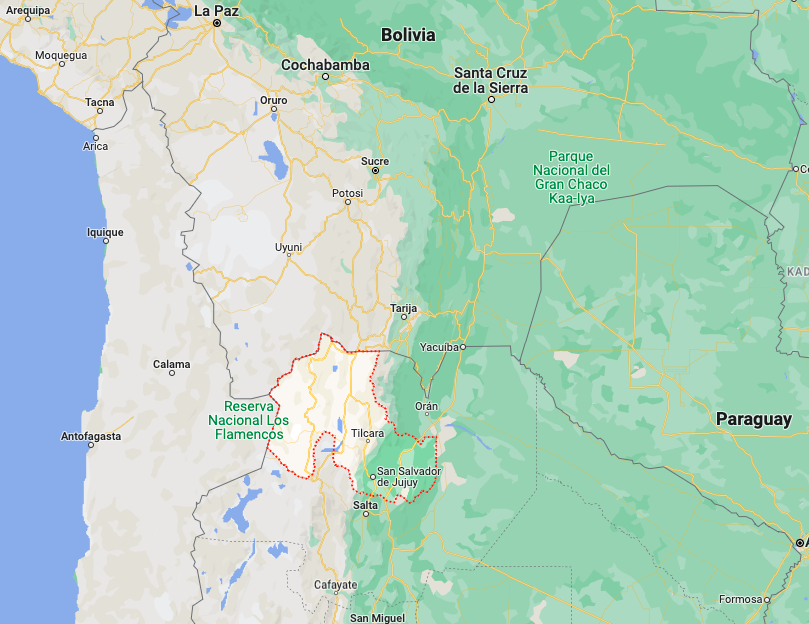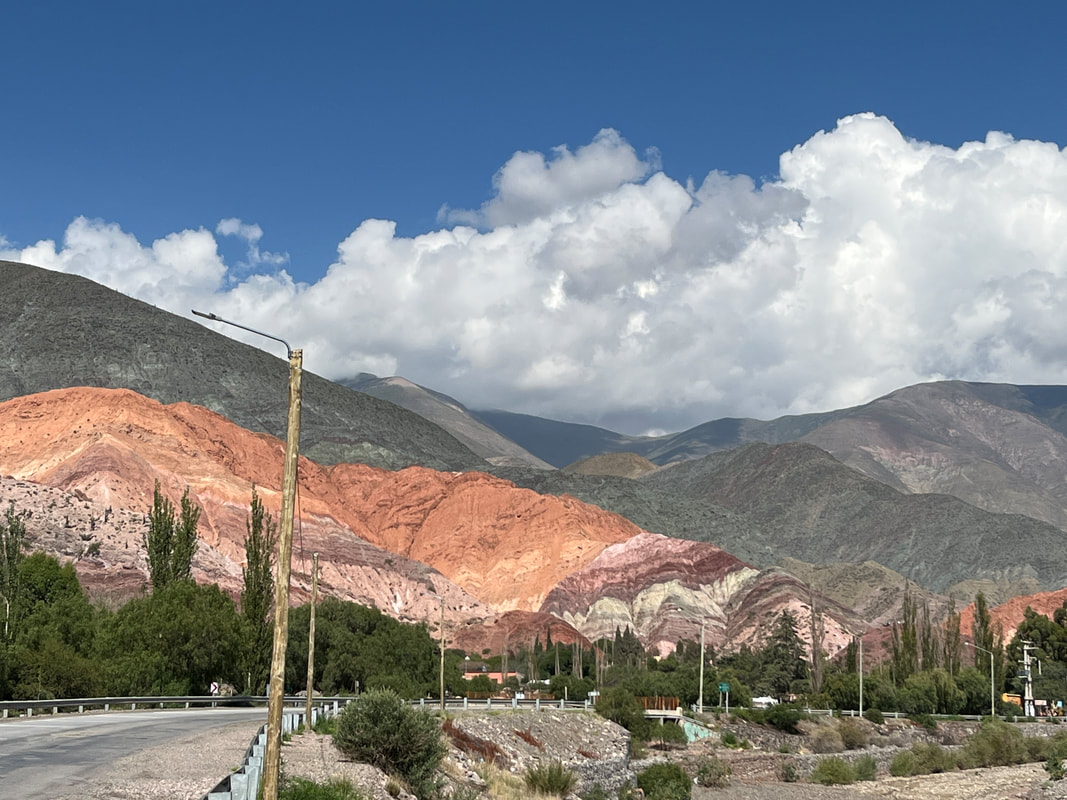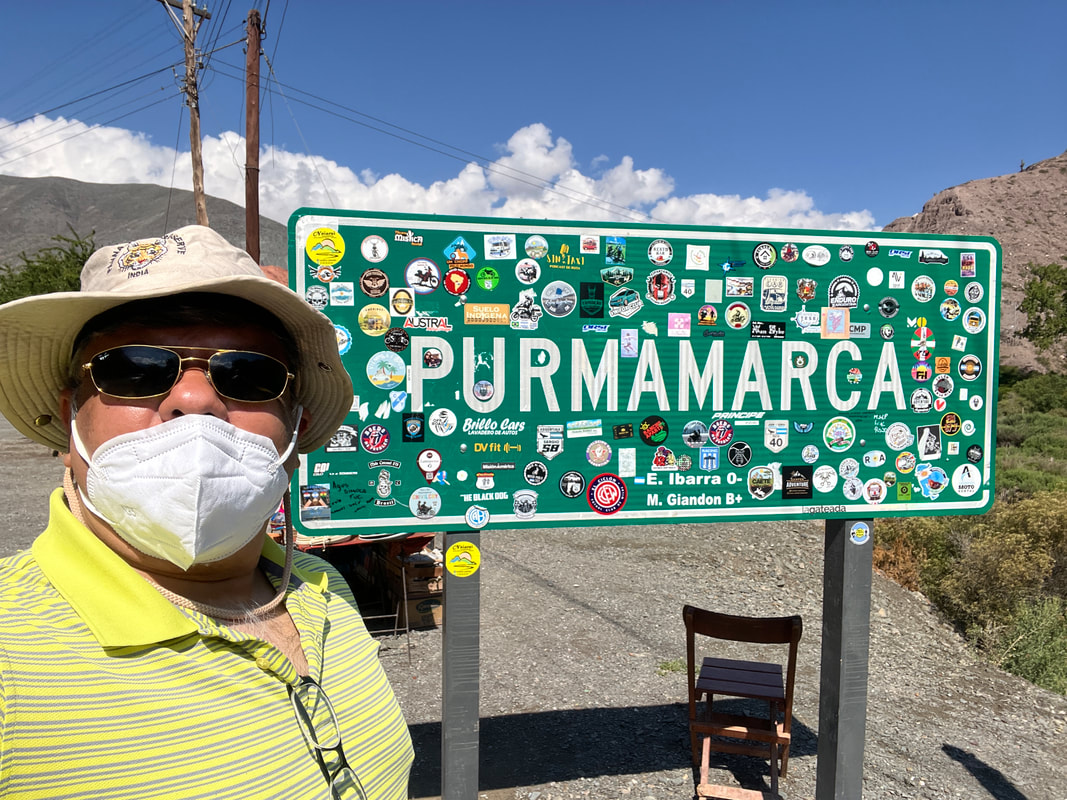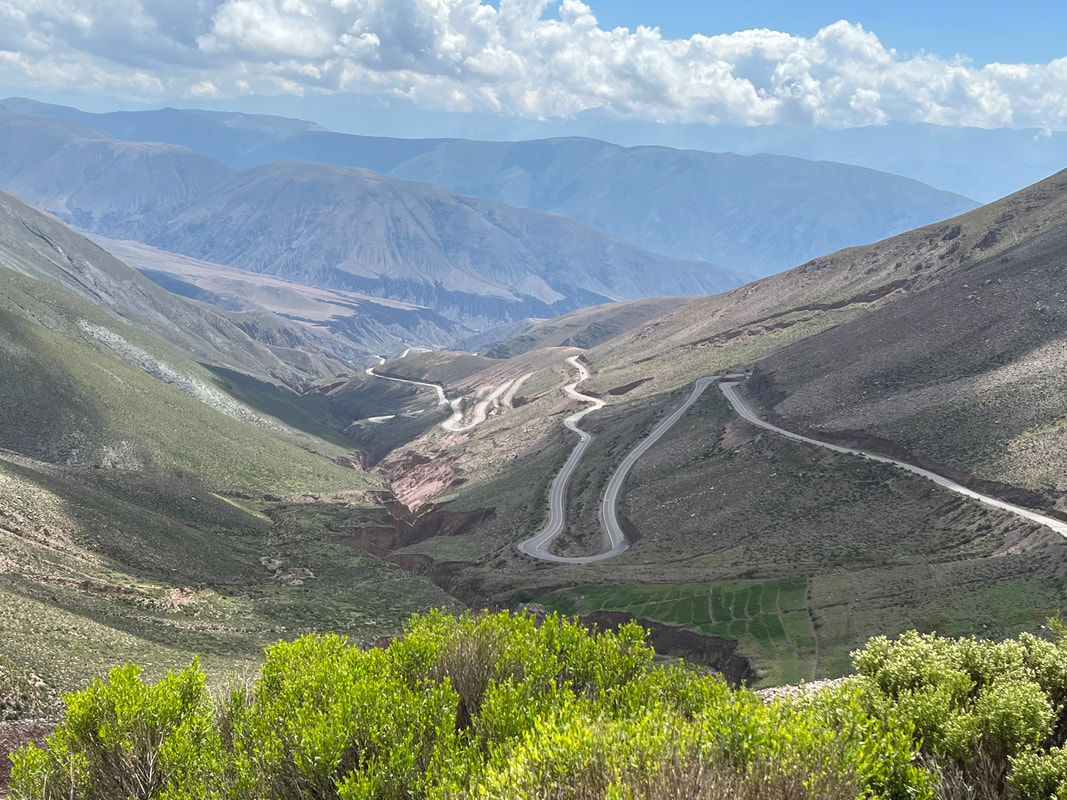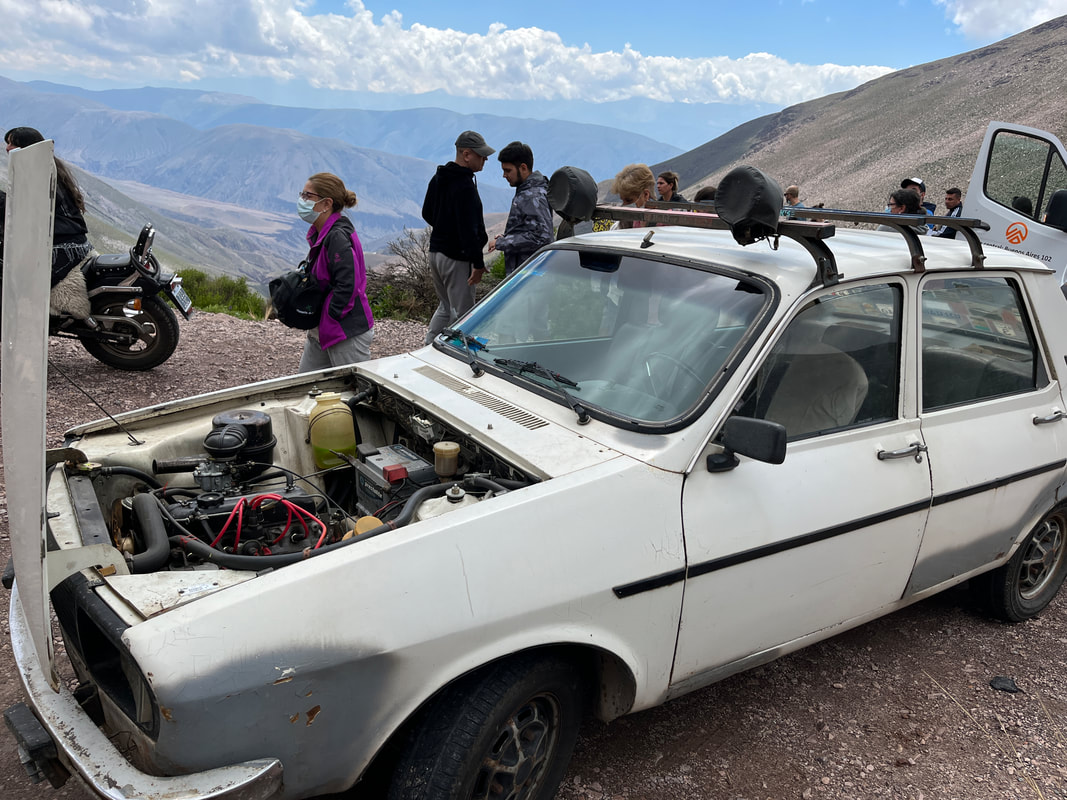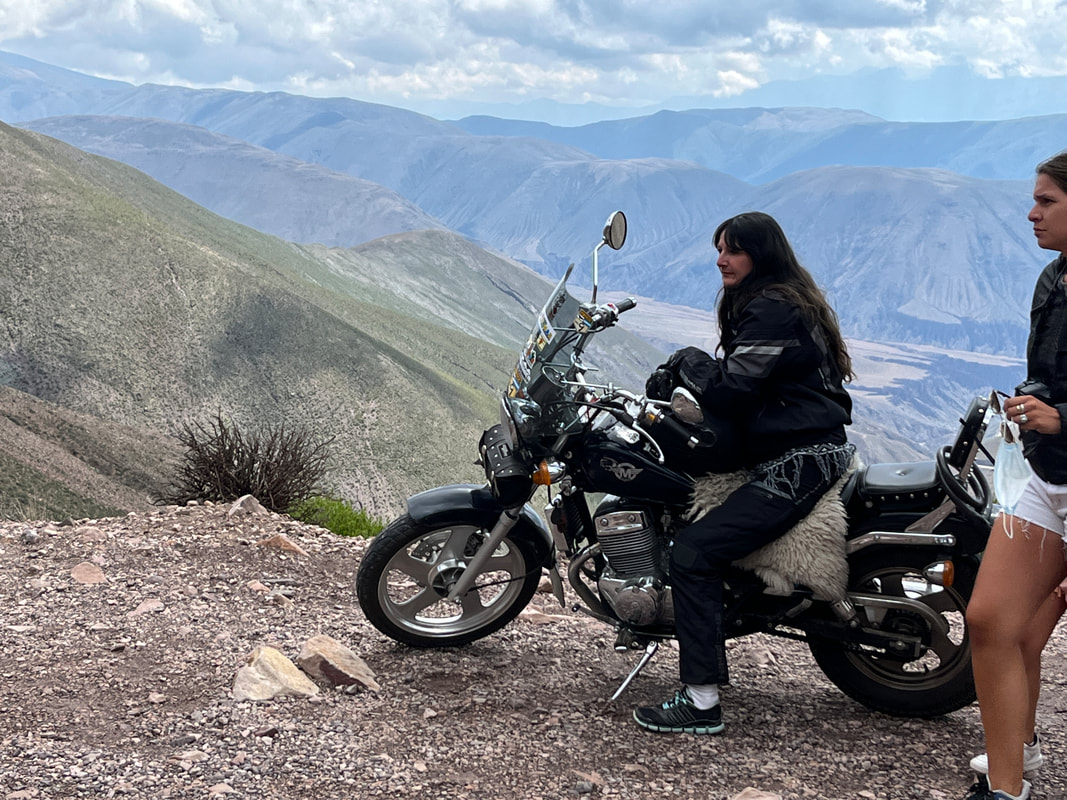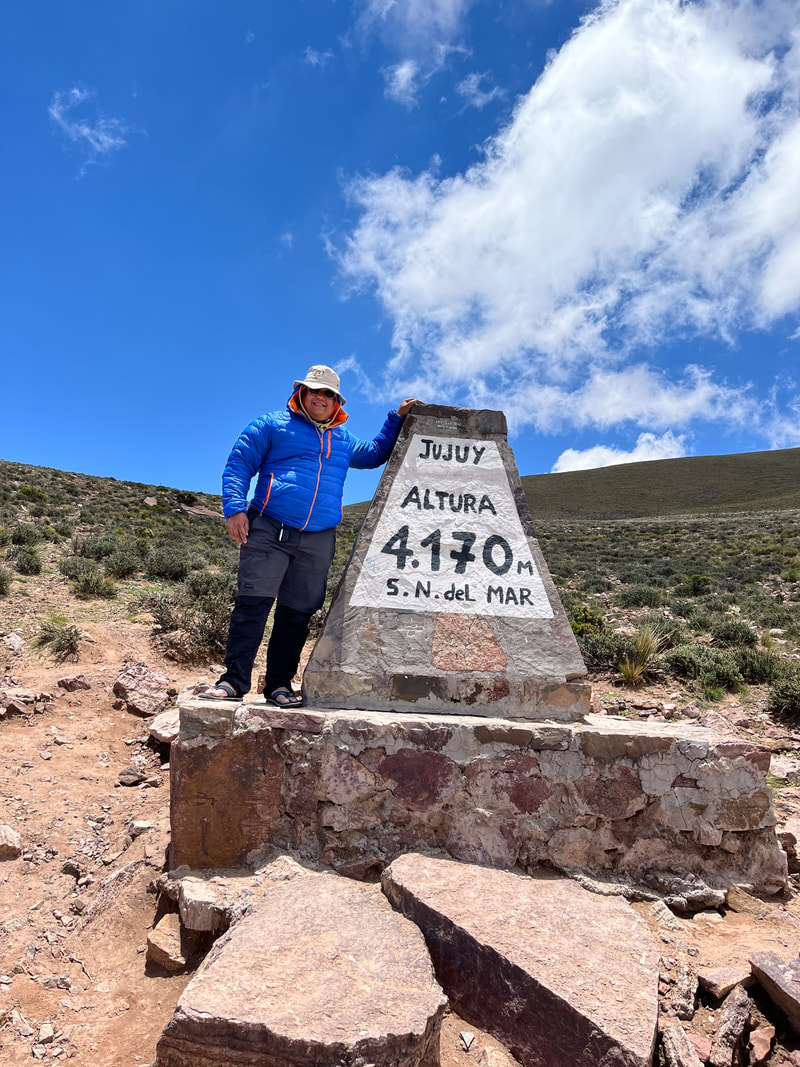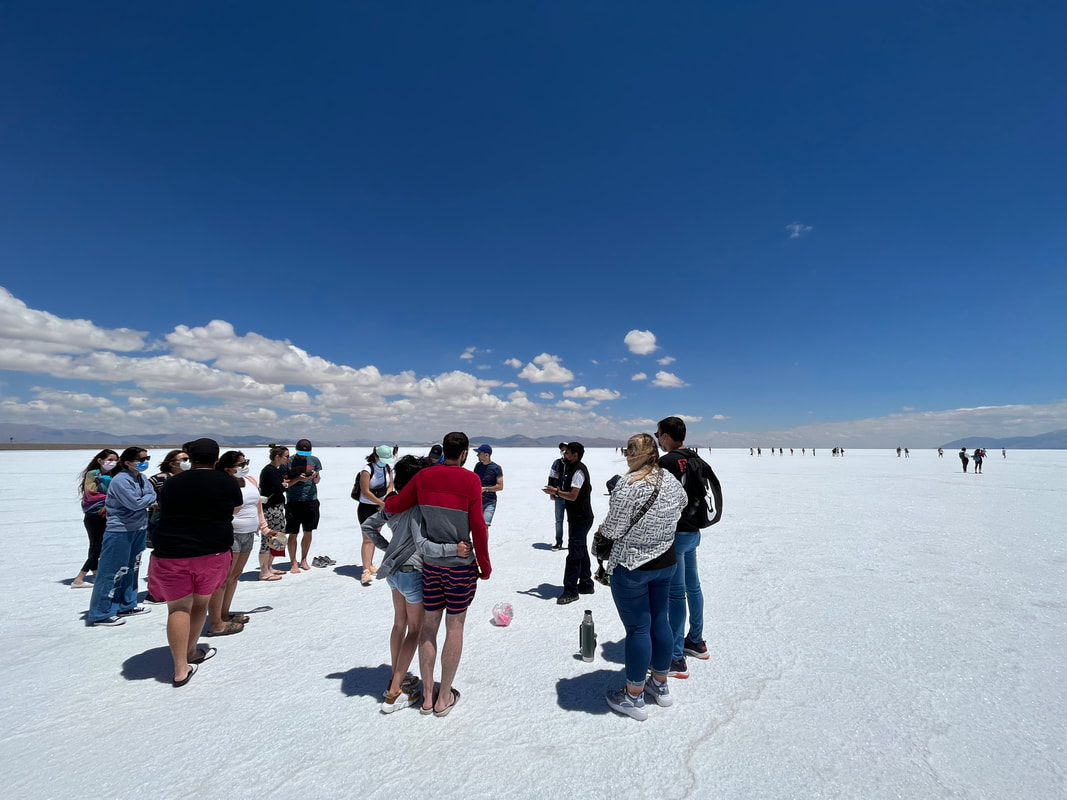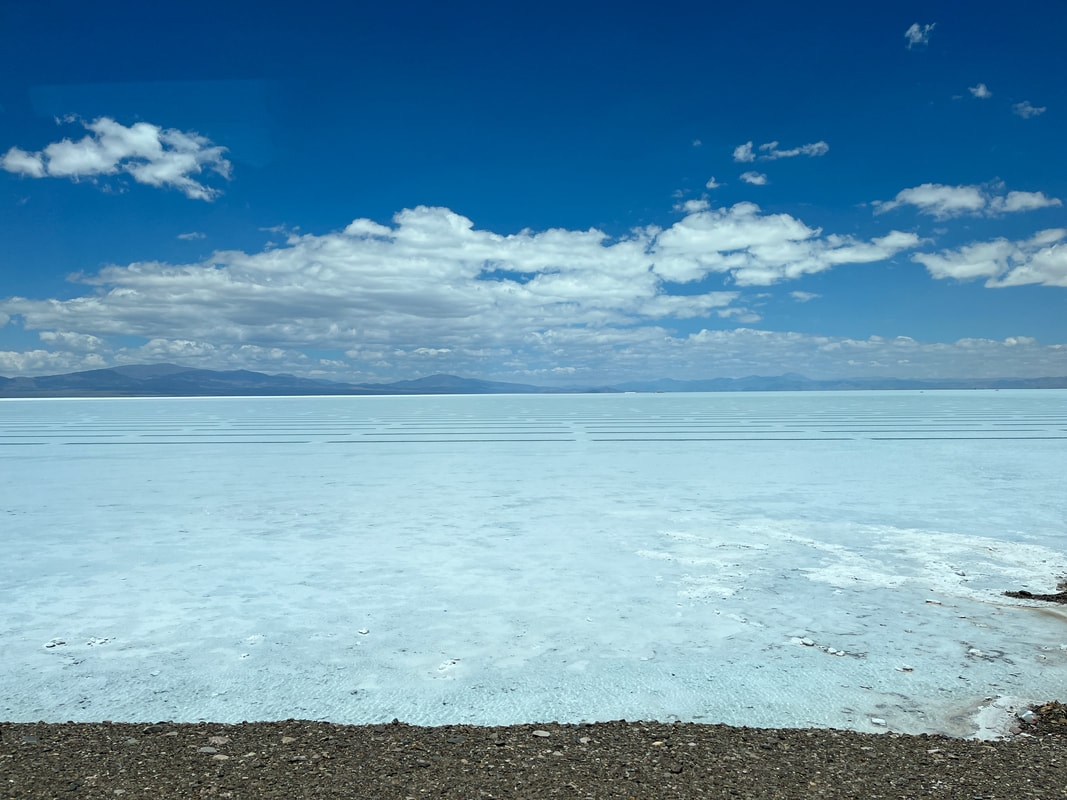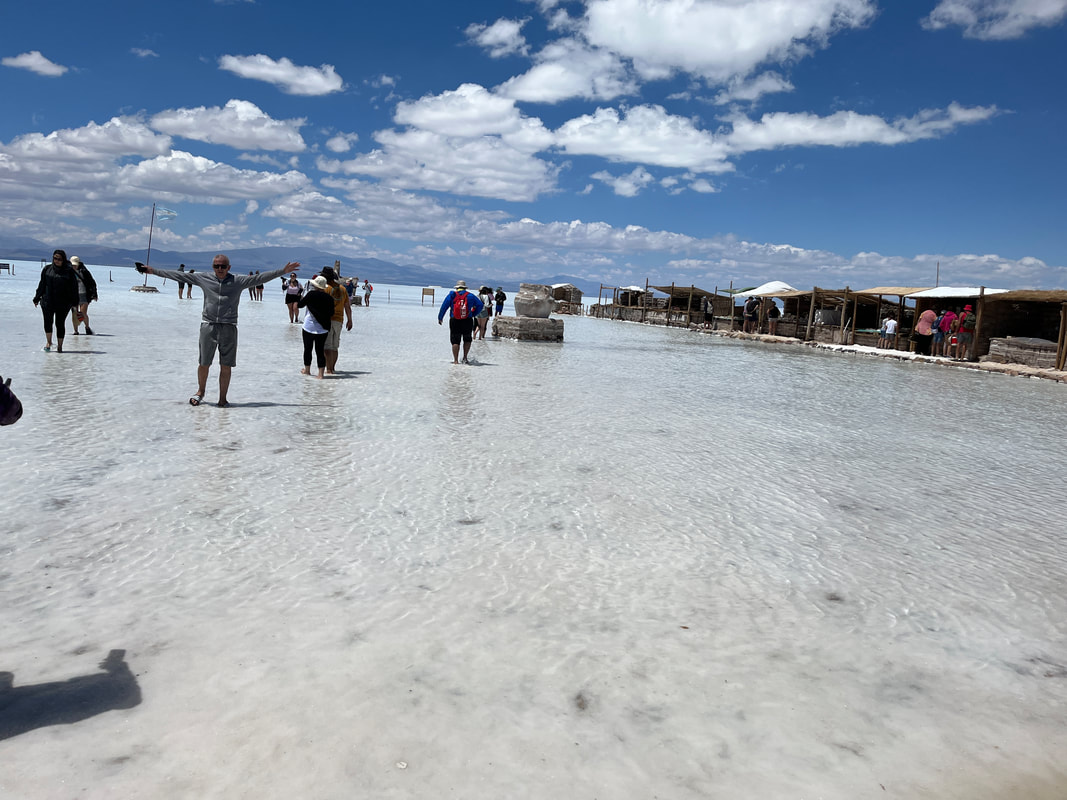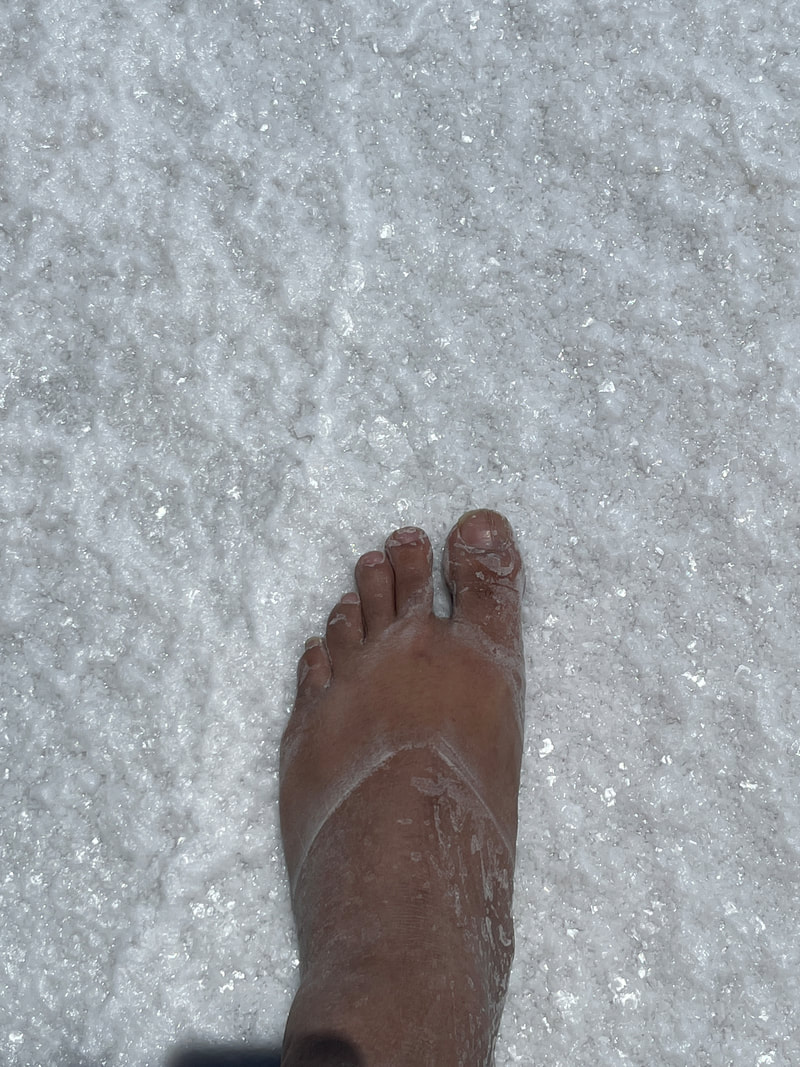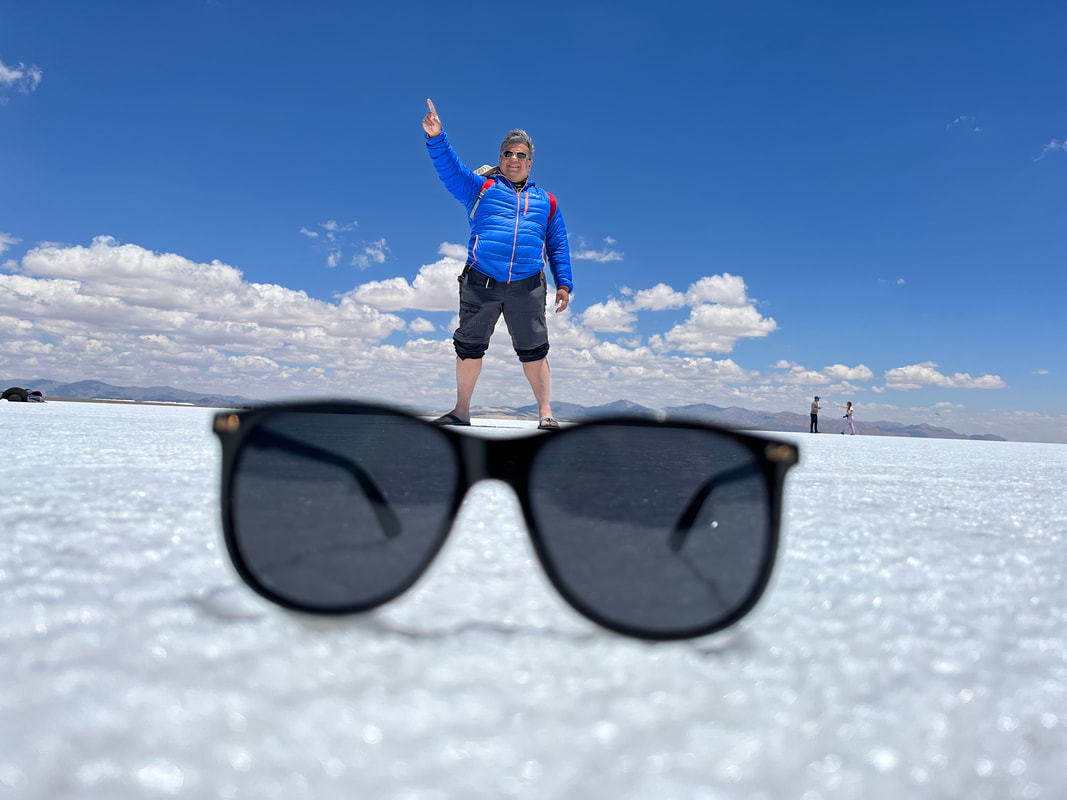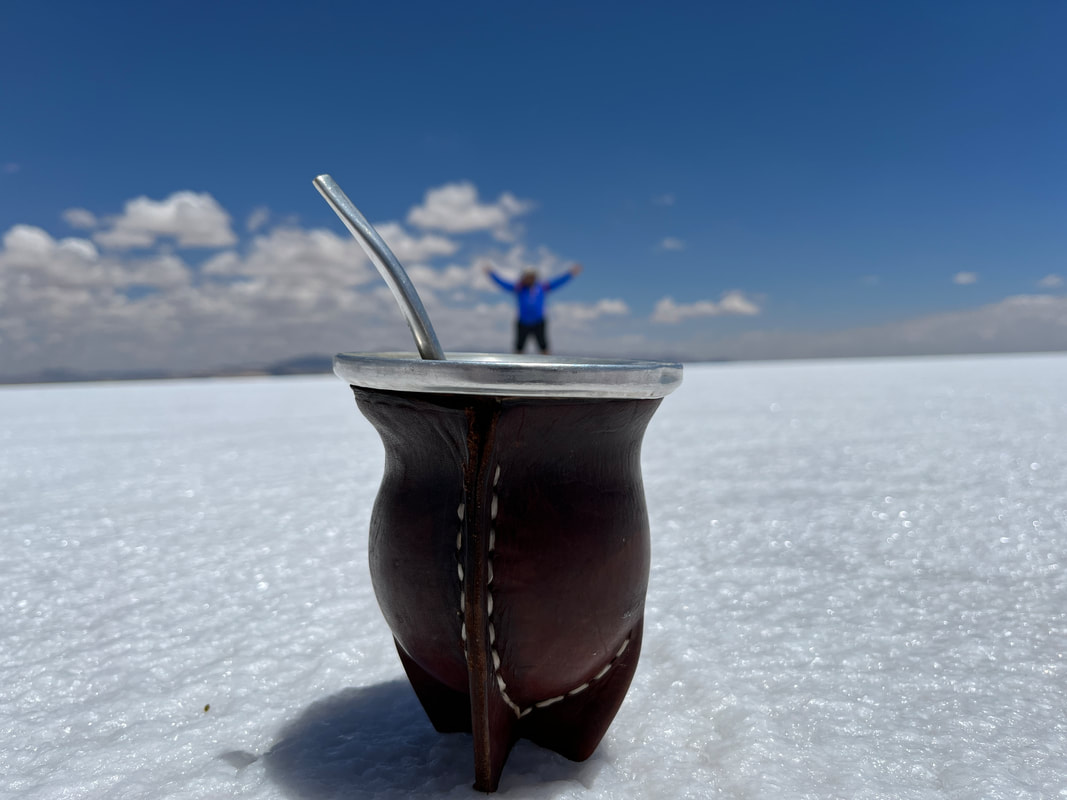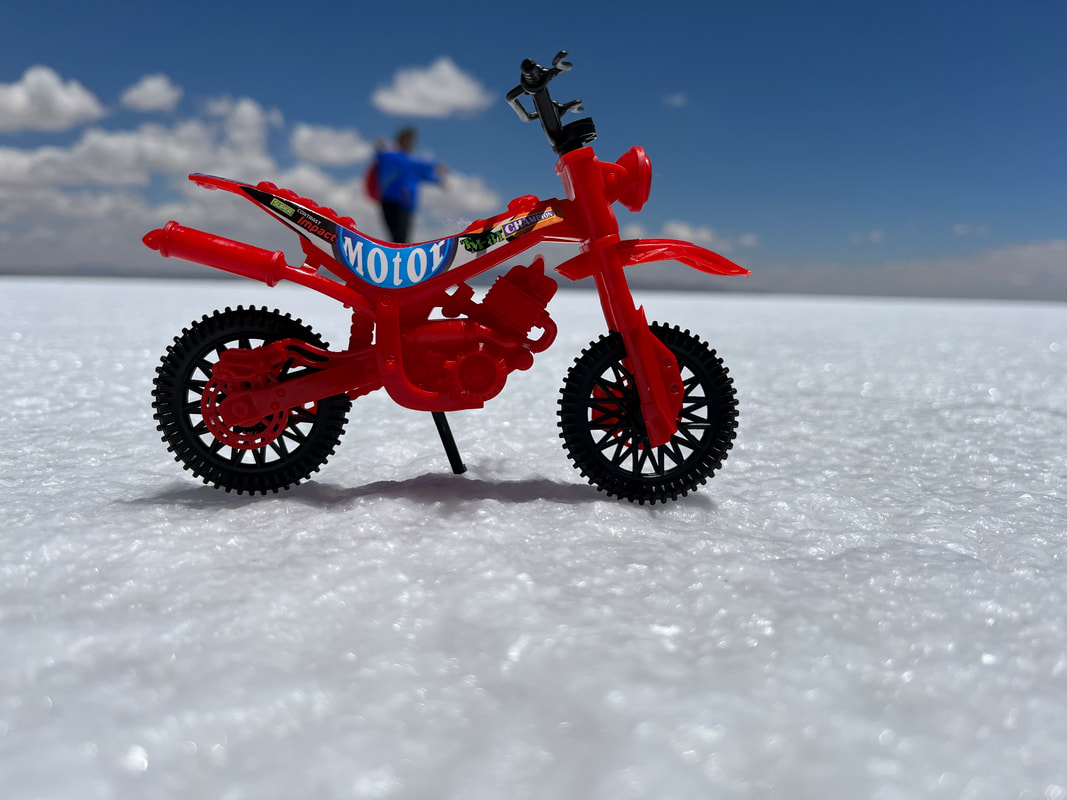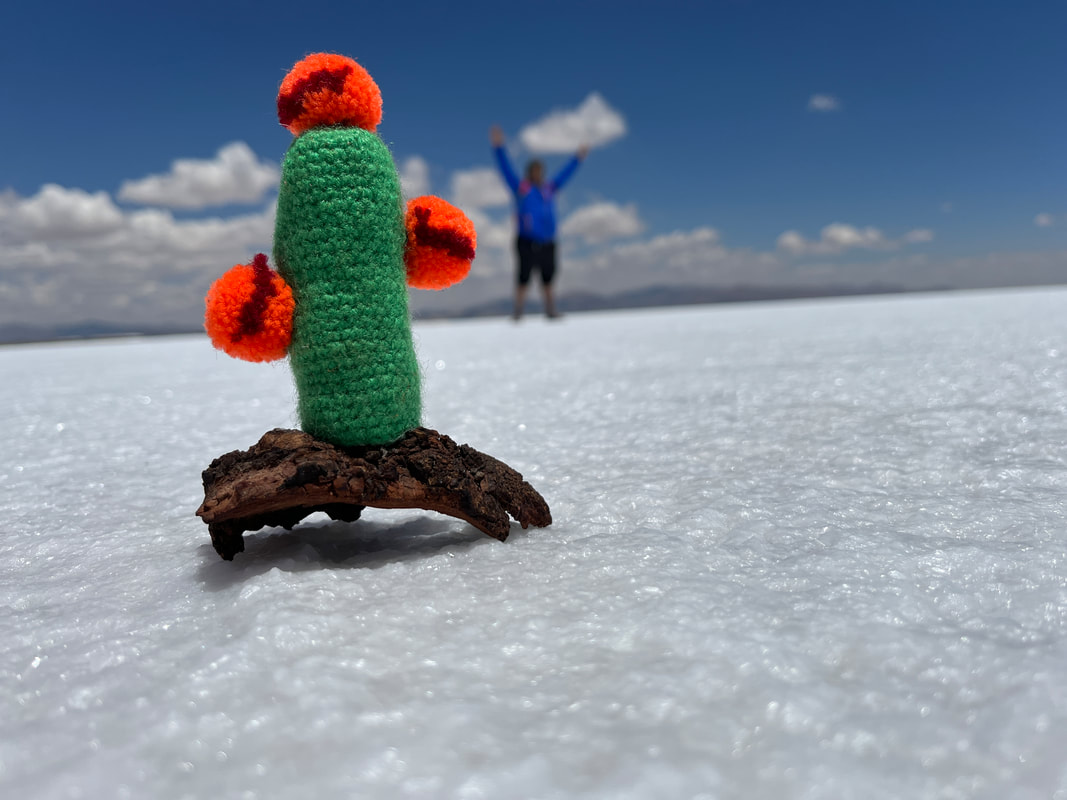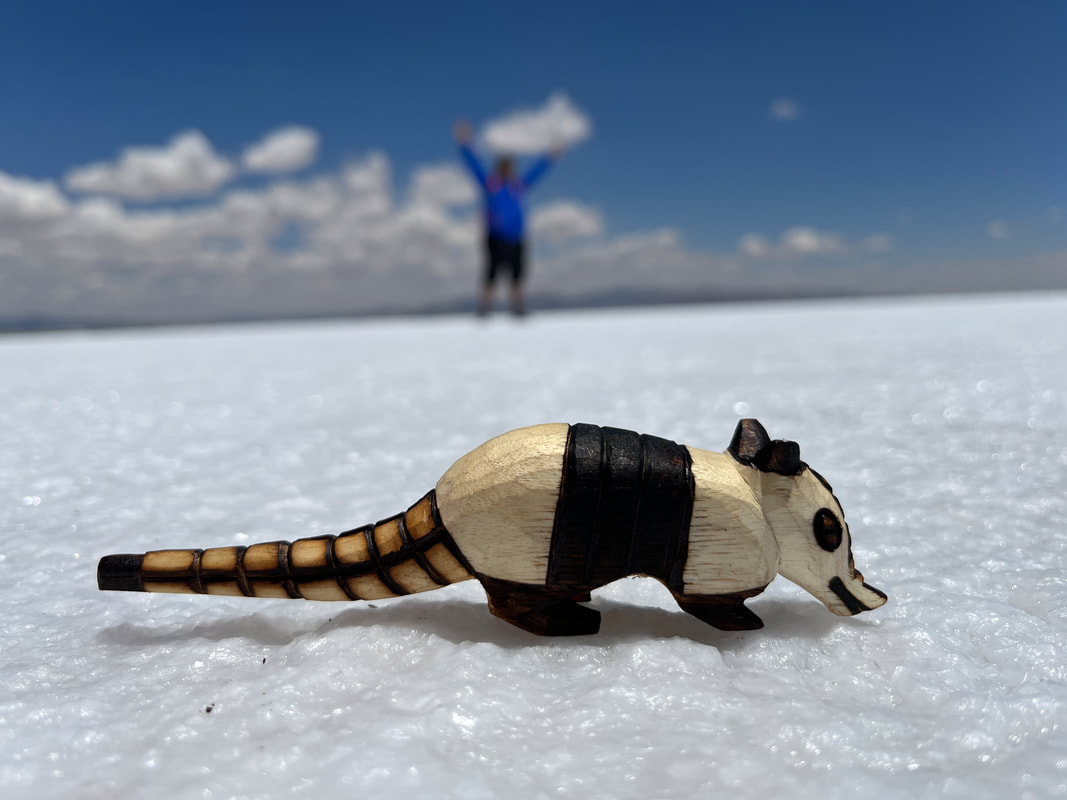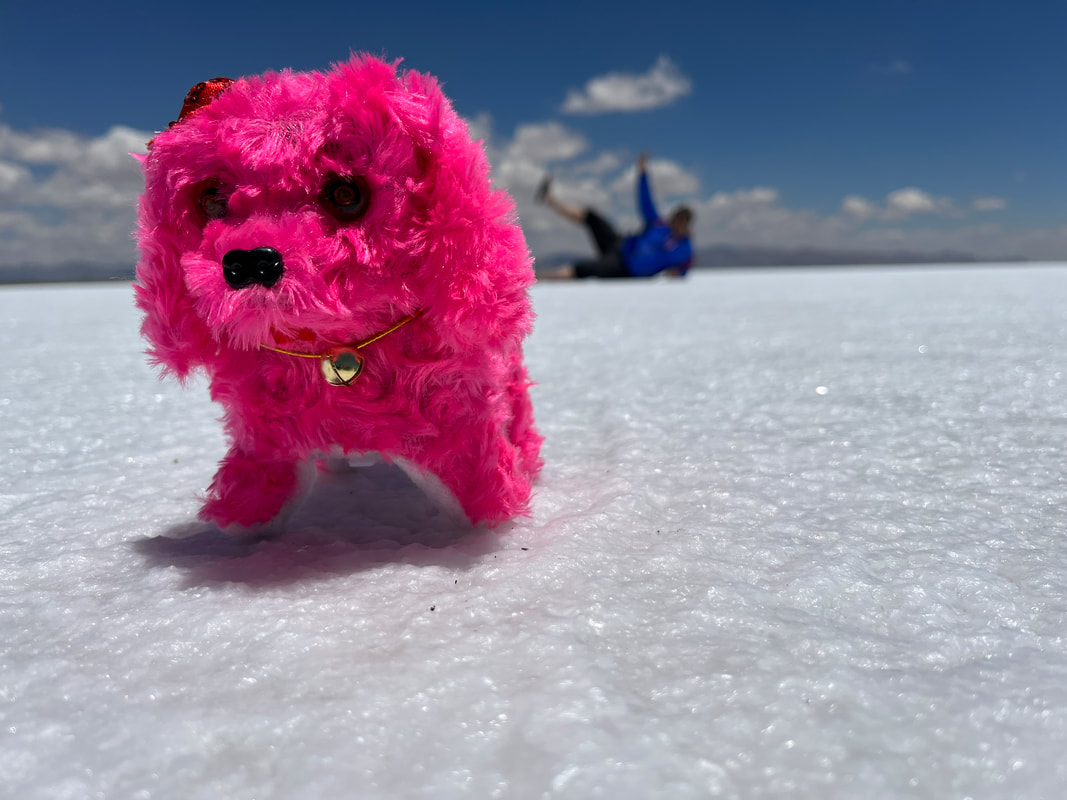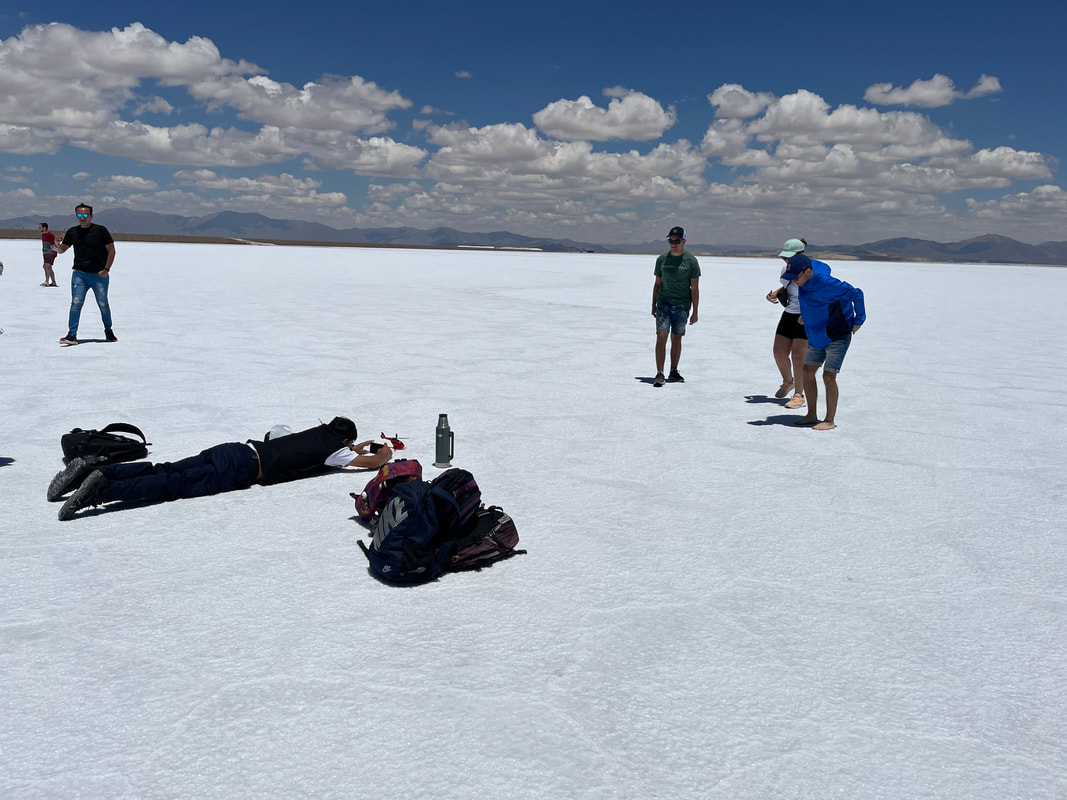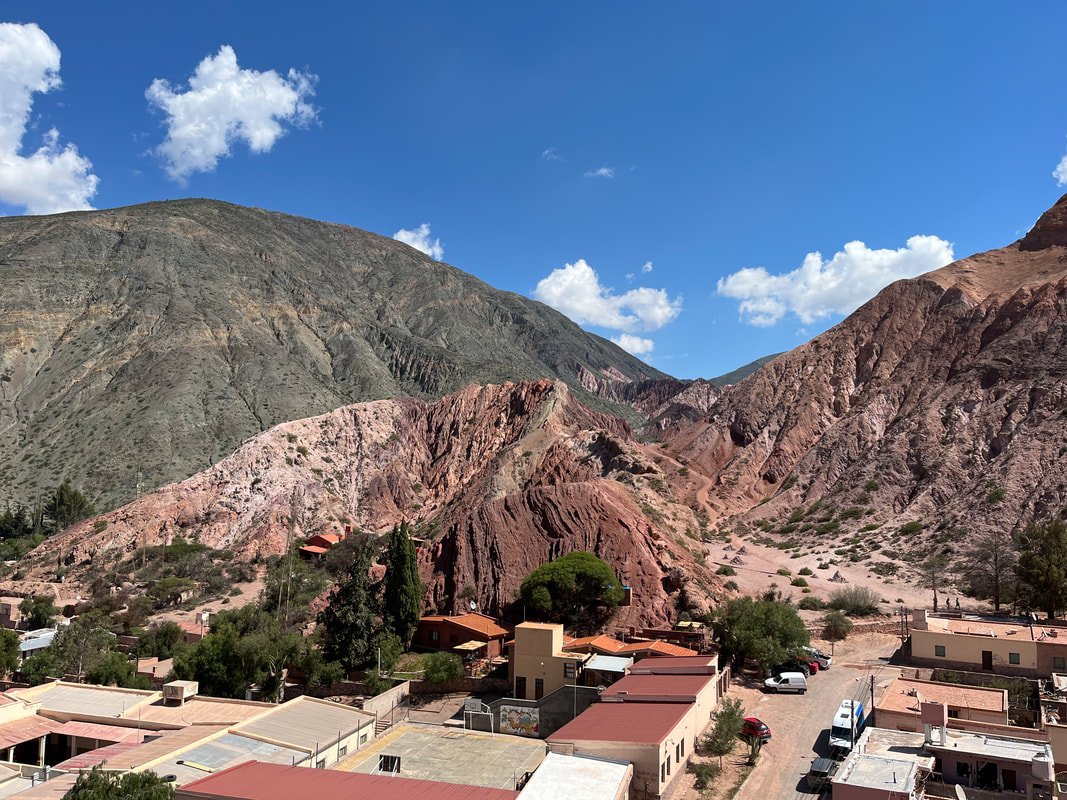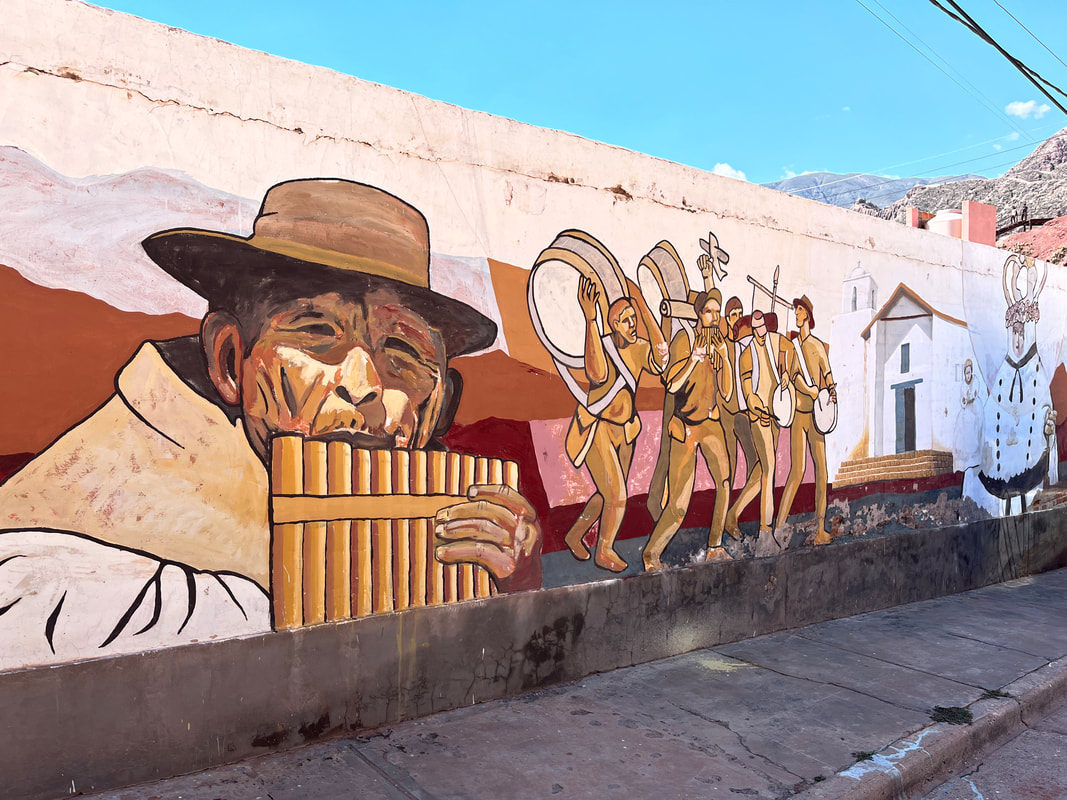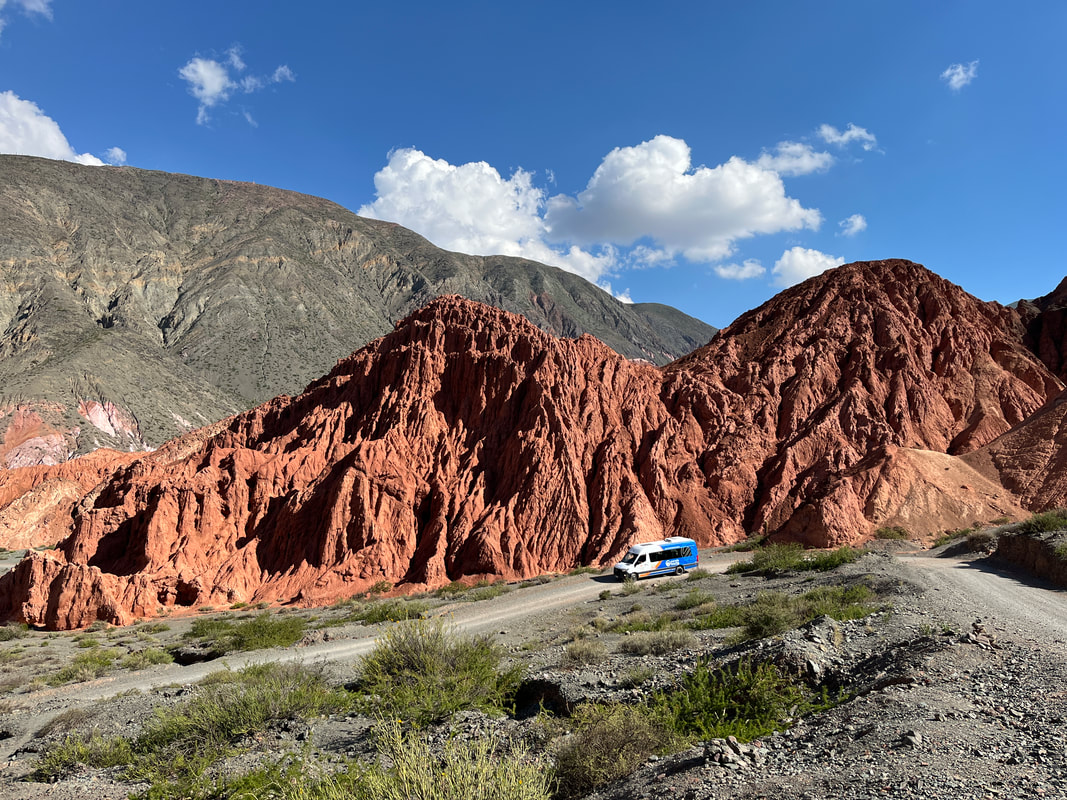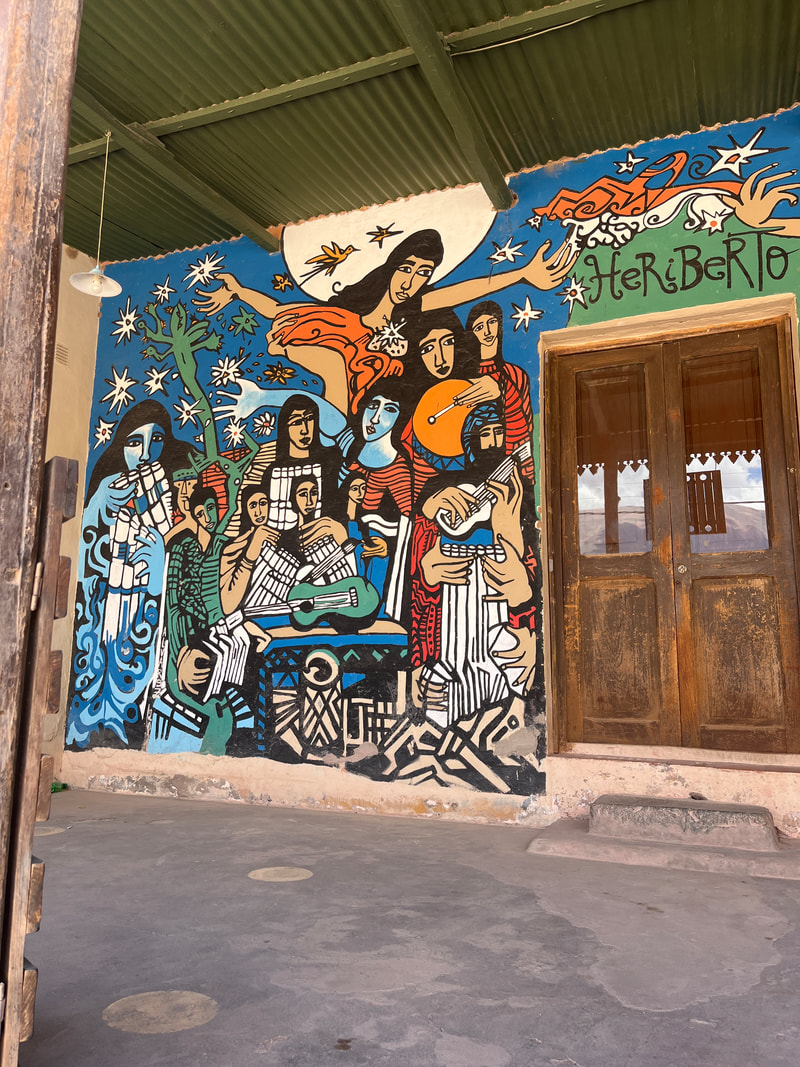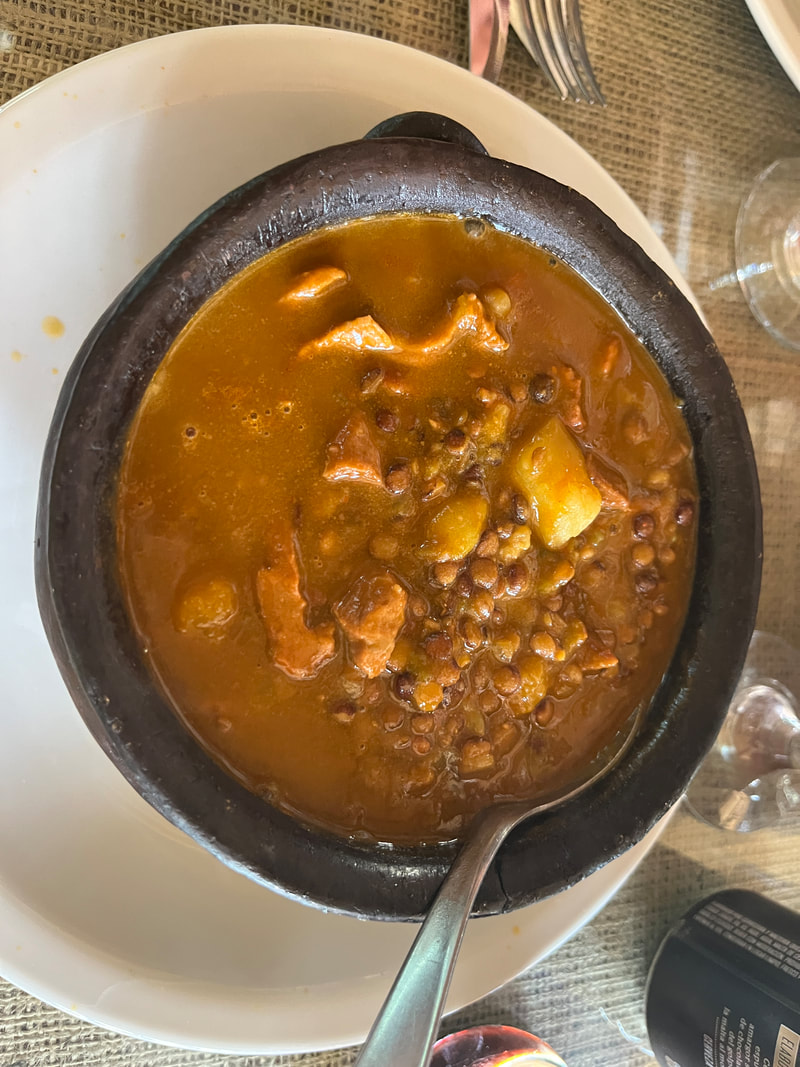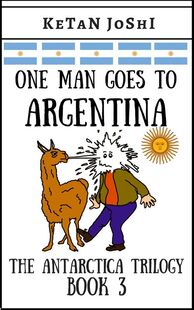Salinas Grande
Today I was going to the Salinas grande - the great salt flats in the Andes!
Day before yesterday, I noticed a travel agent’s shop near the hotel and dropped in to see what tours they had. The agent at the counter had been a pretty and friendly girl who spoke a little english, and she had shown me the various options of things to see around Salta and I had booked a tour to the salt flats.
‘Hoy!’ she had said
‘Eh?’ I was taken aback.
‘Who hoy?
‘Eh?’
I looked at her and she looked at me. Finally she again said
‘Hee haw!’
‘Eh?’
I gave an uncomprehending look. Why was she braying? Was she turning into a donkey?
She pursed her lips and narrowed her eyes and tapped the map.
‘Who who’ she said again. Now she was imitating an owl! WTF?
‘Eh?’
Now she scowled and tapped on the map.
‘HERE! YOU ARE GOING HERE!’
I looked at where she was tapping.
It said ‘Jujuy’.
‘JOO JOO OOEE’ I read out.
‘NO NO! WHO WHO OOEE’
‘Eh?’
It took longer than I would like to admit to realise that the name of the province’ Jujuy’ was pronounced as ‘Huhuy’ - ‘Who who eee’
The name Jujuy derives from a type of Inca provincial governor encountered there by the Spanish in the late 16th century - and whom they must have quickly killed off, I suppose.
But his name lives on! Or the name of his post, at least!
Day before yesterday, I noticed a travel agent’s shop near the hotel and dropped in to see what tours they had. The agent at the counter had been a pretty and friendly girl who spoke a little english, and she had shown me the various options of things to see around Salta and I had booked a tour to the salt flats.
‘Hoy!’ she had said
‘Eh?’ I was taken aback.
‘Who hoy?
‘Eh?’
I looked at her and she looked at me. Finally she again said
‘Hee haw!’
‘Eh?’
I gave an uncomprehending look. Why was she braying? Was she turning into a donkey?
She pursed her lips and narrowed her eyes and tapped the map.
‘Who who’ she said again. Now she was imitating an owl! WTF?
‘Eh?’
Now she scowled and tapped on the map.
‘HERE! YOU ARE GOING HERE!’
I looked at where she was tapping.
It said ‘Jujuy’.
‘JOO JOO OOEE’ I read out.
‘NO NO! WHO WHO OOEE’
‘Eh?’
It took longer than I would like to admit to realise that the name of the province’ Jujuy’ was pronounced as ‘Huhuy’ - ‘Who who eee’
The name Jujuy derives from a type of Inca provincial governor encountered there by the Spanish in the late 16th century - and whom they must have quickly killed off, I suppose.
But his name lives on! Or the name of his post, at least!
Jujuy is a province of Argentina, located in the extreme northwest of the country, at the borders with Chile and Bolivia - and is completely surrounded by Salta province, and seems to consist mainly of mountains, high plateaus and deep gorges cut by the various rivers. The vast difference in height and climate produces desert areas such as the Salinas Grandes salt mines and subtropical Yungas jungle.
It’s an amazing place with a wild and untamed beauty and I couldn’t wait to see it!
It’s an amazing place with a wild and untamed beauty and I couldn’t wait to see it!
Our first stop was the town of Purmamarca, with its insanely awesome scenery! Purmamarca is at 2200m of elevation, with the mountain around it jutting up much higher. I think this is the collectively most colourful point in Northern Argentina, with ribbons of color flowing through all the mountains in the area.
It’s amazing! It’s like a layer cake! What a riot of colour! The ‘Hill of 7 colors’ is located in Purmamarca, just off the highway 9. It’s one of the most incredible natural wonders I’ve ever seen! I still struggle to find the words to describe it! The photos can give you some idea - but they will not - can not - show the sheer scale of the place! Imagine the biggest hill or mountain in your neighbourhood, or state, or whatever - and then imagine it painted in a riot of colours!
It’s amazing! It’s like a layer cake! What a riot of colour! The ‘Hill of 7 colors’ is located in Purmamarca, just off the highway 9. It’s one of the most incredible natural wonders I’ve ever seen! I still struggle to find the words to describe it! The photos can give you some idea - but they will not - can not - show the sheer scale of the place! Imagine the biggest hill or mountain in your neighbourhood, or state, or whatever - and then imagine it painted in a riot of colours!
But, we were not going to the Humahuaca region - we were turning left on to Route 52 - towards the Salinas Grande.
And that meant that we would now be climbing the Andes and hitting some pretty high altitudes and negotiating some steep curves - and possibly getting road sick or altitude-sick! The guide immediately passed out plastic ‘throw up’ bags just in case, and opened the windows of the van and told us not to worry if you felt sick - you would soon acclimatise.
We climbed and climbed and climbed and I really enjoyed going up the mountains. It looked like one of my most favourite places on earth - the Ladakh region in India. The same stark treeless landscape, the winding roads, the brown landscape with small shrubs - and the beautiful blue sky! What a sky!
We stopped at the top of the tallest pass, at a very respectable altitude of 4000 meters above sea level! You don’t want to sing and dance about at this altitude - you would rather walk about most circumspectly!
And that meant that we would now be climbing the Andes and hitting some pretty high altitudes and negotiating some steep curves - and possibly getting road sick or altitude-sick! The guide immediately passed out plastic ‘throw up’ bags just in case, and opened the windows of the van and told us not to worry if you felt sick - you would soon acclimatise.
We climbed and climbed and climbed and I really enjoyed going up the mountains. It looked like one of my most favourite places on earth - the Ladakh region in India. The same stark treeless landscape, the winding roads, the brown landscape with small shrubs - and the beautiful blue sky! What a sky!
We stopped at the top of the tallest pass, at a very respectable altitude of 4000 meters above sea level! You don’t want to sing and dance about at this altitude - you would rather walk about most circumspectly!
A lot of people had stopped at that view point - including a biker! A lady biker! I am always happy to see a biker on a mountain road - these are my kind of people. I have spent the last 10 years biking over all sorts of mountains, and have a fellow-feeling with the special kind of lunacy it takes to do that sort of thing.
All my biking has been in the Himalayas - and every high pass there is festooned with colourful Tibetan Buddhist prayer flags flapping in the wind and spreading blessings across the land. It seemed so odd to see the naked marker there, with no colourful flags on it.
All my biking has been in the Himalayas - and every high pass there is festooned with colourful Tibetan Buddhist prayer flags flapping in the wind and spreading blessings across the land. It seemed so odd to see the naked marker there, with no colourful flags on it.
And finally we came to the salt flats!
Salinas Grandes is a vast white desert that stretches for more than 200 square kilometers into the horizon. Stunning and spectacular, the Salinas Grandes is the third largest salt flat in the world and the largest in Argentina.
Salinas Grandes is a vast white desert that stretches for more than 200 square kilometers into the horizon. Stunning and spectacular, the Salinas Grandes is the third largest salt flat in the world and the largest in Argentina.
This immense and expansive desert was once Lago Salinas Grandes, an inland sea that evaporated in the Holocene Era - and left its salt behind! Today, this half-meter thick crust of salt dazzles visitors thanks to its seemingly never-ending enormity and its blinding contrast between the brilliant blue sky and the glowing white crust.
Obviously it is much smaller than the salt flats of Bolivia - The Salar de Uyuni in Bolivia is the largest in the world, covering an area of 4,087 sq. mi. (10.580 km2), that makes it 50 times bigger than the Salinas Grandes!
Obviously it is much smaller than the salt flats of Bolivia - The Salar de Uyuni in Bolivia is the largest in the world, covering an area of 4,087 sq. mi. (10.580 km2), that makes it 50 times bigger than the Salinas Grandes!
But you cannot really appreciate that kind of scale. Who cares how much the salt flat stretches beyond what you can see? There was salt as far as the eye can see - and that is good enough for me. I had the same feeling when I went to the Great Barrier Reef in Australia. Sure, it might be very big - but how does that matter to me? I can only see a little at a time!
We came out of the van and our guide took us into the dry salt beds - pure white in every direction! Crazy! And it was totally hard and dry, and not soft and muddy as salt flats are many times.
You can totally freak out in the huge white flatlands - either jump and scream and run around, or lie down and lick the salt, or meditate on the vastness of life and how tiny you are in the large scheme of things.
But after having done that - you go and take silly photos of yourself.
The guide had brought along a whole bunch of toys - a little motorcycle, a pink fluffy dog, a ring tailed raccoon, a mate pot - and he lay down full length on the salt and took forced perspective photos of each of us. That means keeping the toy really close to the camera so that it looks big, and you go far away so you look small, and then it looks like you are actually sitting inside the mate pot, or climbing on the toy motorcycle or are as big as your sunglasses - silly and fun stuff like that.
That sincere fellow lay in the salt for 45 minutes and took the forced perspective photos for all the 20-30 tourists in his bus!
But after having done that - you go and take silly photos of yourself.
The guide had brought along a whole bunch of toys - a little motorcycle, a pink fluffy dog, a ring tailed raccoon, a mate pot - and he lay down full length on the salt and took forced perspective photos of each of us. That means keeping the toy really close to the camera so that it looks big, and you go far away so you look small, and then it looks like you are actually sitting inside the mate pot, or climbing on the toy motorcycle or are as big as your sunglasses - silly and fun stuff like that.
That sincere fellow lay in the salt for 45 minutes and took the forced perspective photos for all the 20-30 tourists in his bus!
We retraced our route via the high pass - where we stopped and took selfies, since there had been too much of a crowd earlier - and then came back to Purmamarca for lunch in a nice hotel.
I ordered a local dish called ‘Locro’. It comes from the Quechua dish ‘ruqru’, and is a hearty thick squash stew, associated with Native Andean civilizations, and popular along the Andes mountain range and is popular across all the countries in the area - Peru, Bolivia, Ecuador, Chile, Paraguay,Argentina and Colombia!
The dish is a made of squash, corn, beans, potato, pumpkins, beef, onions… - and whatever else they can find, I suppose! It is basically a thick soup - and the housewife must have put whatever she had in the kitchen into it!
I ordered a local dish called ‘Locro’. It comes from the Quechua dish ‘ruqru’, and is a hearty thick squash stew, associated with Native Andean civilizations, and popular along the Andes mountain range and is popular across all the countries in the area - Peru, Bolivia, Ecuador, Chile, Paraguay,Argentina and Colombia!
The dish is a made of squash, corn, beans, potato, pumpkins, beef, onions… - and whatever else they can find, I suppose! It is basically a thick soup - and the housewife must have put whatever she had in the kitchen into it!

